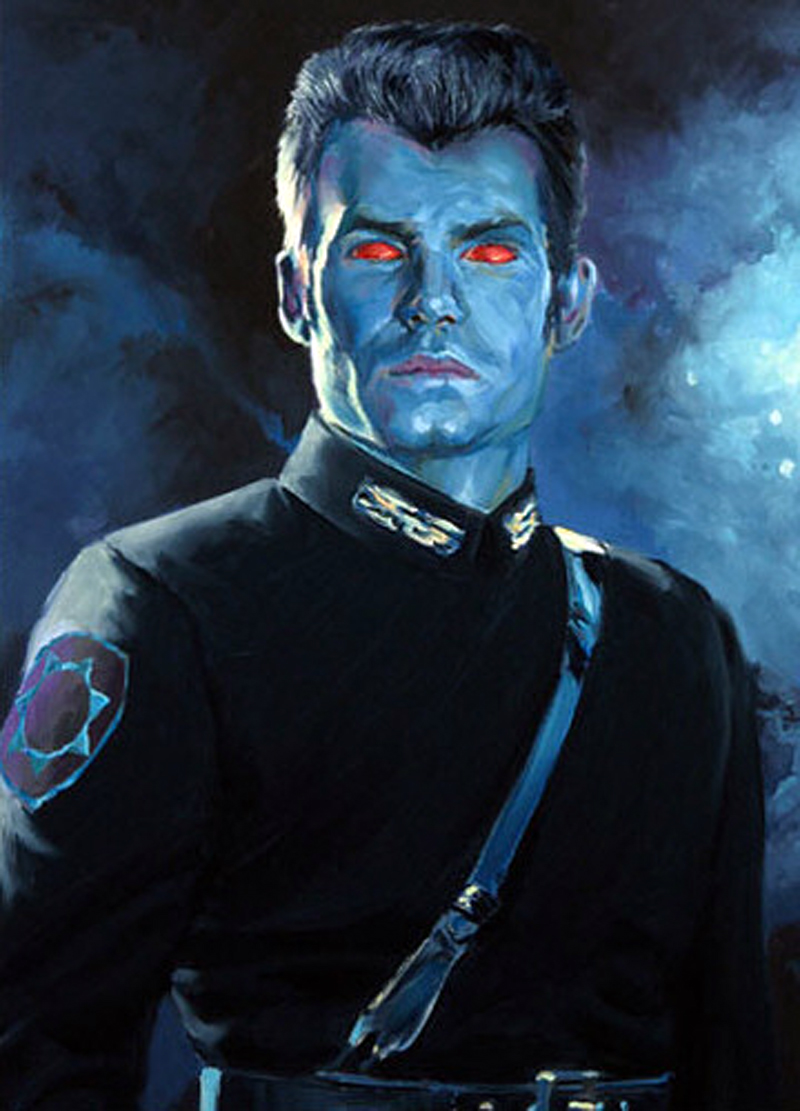Near-Human was the general term for any of the many species or subspecies in the galaxy which were very closely related biologically to baseline Humans. In contrast, other humanoid species only had general external similarities to Humans, and had no biological connection. However, the term "humanoid" was sometimes used loosely to describe Near-Human species.
Most Near-Humans shared close external similarities to Humans, usually with small differences in skin and eye color or bone structure. Biologically, many Near-Humans were capable of interbreeding with baseline Humans. Some were close enough to the Human baseline to be considered a race or ethnic group of Humans, rather than a separate species. Similarly, some groups, biologically classified as Humans, though differing from the Human mainstream almost entirely in their culture, were considered so distinct that they were sometimes referred to as Near-Human.
The term "Near-Human" was used for species and races which had evolved significant physiological differences from baseline Humanity. It was also occasionally used for unrelated species with substantial external similarities to Humans, such as the plant-descended Zelosians, though such use was technically improper.
Though Near-Humans were not Human in the strictest sense, their "almost human" status led to exceptions in the xenophobic and Humanocentric policies of the Galactic Empire. Not all Imperials accepted Near-Humans as equals, however: Grand Admiral Rufaan Tigellinus despised high-ranking Near-Human colleagues such as the part-Sephi Grand Moff Bertroff Hissa and the Chiss Grand Admiral Thrawn. Another Imperial Near-Human, Grand Admiral Danetta Pitta, kept his Borneck and Etti ancestry secret while ardently supporting Humanocentrism and Human High Culture. Calian shockboxer Lobar Aybock recalled an Imperial saying in his autobiography—"near Human, not near enough."

Grand Admiral Thrawn was a male Chiss.
The Chiss, a race that dwelt in the Unknown Regions, were a Near-Human people that had pale blue skin, generally black hair, and red reflective or fluorescent eyes which gave them excellent low-light vision. Their growth cycle differed from Humans, with an early maturation, for example. They were differentiated enough from baseline Humans to be considered a new species. In other aspects they resembled normal Humans: they bled red blood, and the cloning tanks used to clone Human stormtroopers also worked on Chiss physiology.

A female Zeltron.
Zeltrons were Near-Humans with a completely Human appearance, save for their skin, which normally came in shades of pink or red. This pigmentation may or may not have been a result of their sun's highly radioactive rays. Generally speaking, they actually were a rather amorous race, famous (or infamous) for their many sculptures and paintings on the subject. Along with their above-average looks, Zeltrons could use telepathy and powerful pheromones to influence other beings with relative ease. They also made great strides in the field of holograms and were responsible for the ones used at Hologram Fun World. Zeltrons were differentiated enough from baseline Humans to actually be considered a new species.
Many other Near-Human races existed, each with their own similarities to and differences from the Human baseline. The Pau'an and Utai species of the planet Utapau, and the Sullustans of Sullust were among the species which, despite outward appearances, were classified as Near-Humans. The Zelosian species, though classified as Near-Humans, were in fact sentient, mobile plants. By contrast, other Near-Humans were close enough to baseline Humans to be identified as sub-groups of the Human species by some sources. These included the Hapans and the Lorrdians.
Humans were not the only sentient species to develop into several distinct races. The Duros, for example, gave rise to several Near-Duros races, such as the Neimoidians. Other pairs of closely related species included: the Xexto and the Quermians; the Horansi subspecies; the many races of the Nikto species; the Ranats and the Tintinna; the Ssi-ruuk and P'w'eck; the Sith and the Massassi; the Zolanders and the Clawdites; the Ewoks and Duloks; the Troob and the Hobors, and the Trandoshans and the Saurin. The t'landa Til and the Hutts were also related to one another, though more distantly. Although unsubstantiated, some in the New Republic speculated about a possible connection between the Yevetha and the Twi'leks.
The Near-Human status of many "alien races" is not always certain. For instance, aliens who appear very similar to Humans may often be assumed by fans to be Near-Human, though this may never be explicitly stated in the canon. The confusion is compounded by the absence of any canonical explanation of what precisely "Near-Human" means. The definition could be as broad as a humanoid creature about the same size and bone structure of a Human, or could be more specific such as being able to biologically reproduce with a Human.
The Utai look obviously non-Human, but are specifically described as Near-Humans in the Revenge of the Sith novelization. Some of this confusion comes from overlapping use of the terms "humanoid" and "Near-Human", both by in-universe sources and real-world writers.
An additional source of ambiguity are groups such as the Lorrdians and Hapans, who are described in different sources as either Near-Humans or as a fully Human racial or ethnic group.
The Twi'leks are frequently assumed to be Near-Human by fans, but no source has yet identified them as Near-Human. They are capable of producing hybrid offspring with Humans, however, such as Jek Lawquane and Shaeeah Lawquane.
From a production perspective, many characters in the Star Wars universe are human actors wearing makeup, masks, or prosthetic appliances, making it difficult and expensive to create races that could not be a Human in a costume.